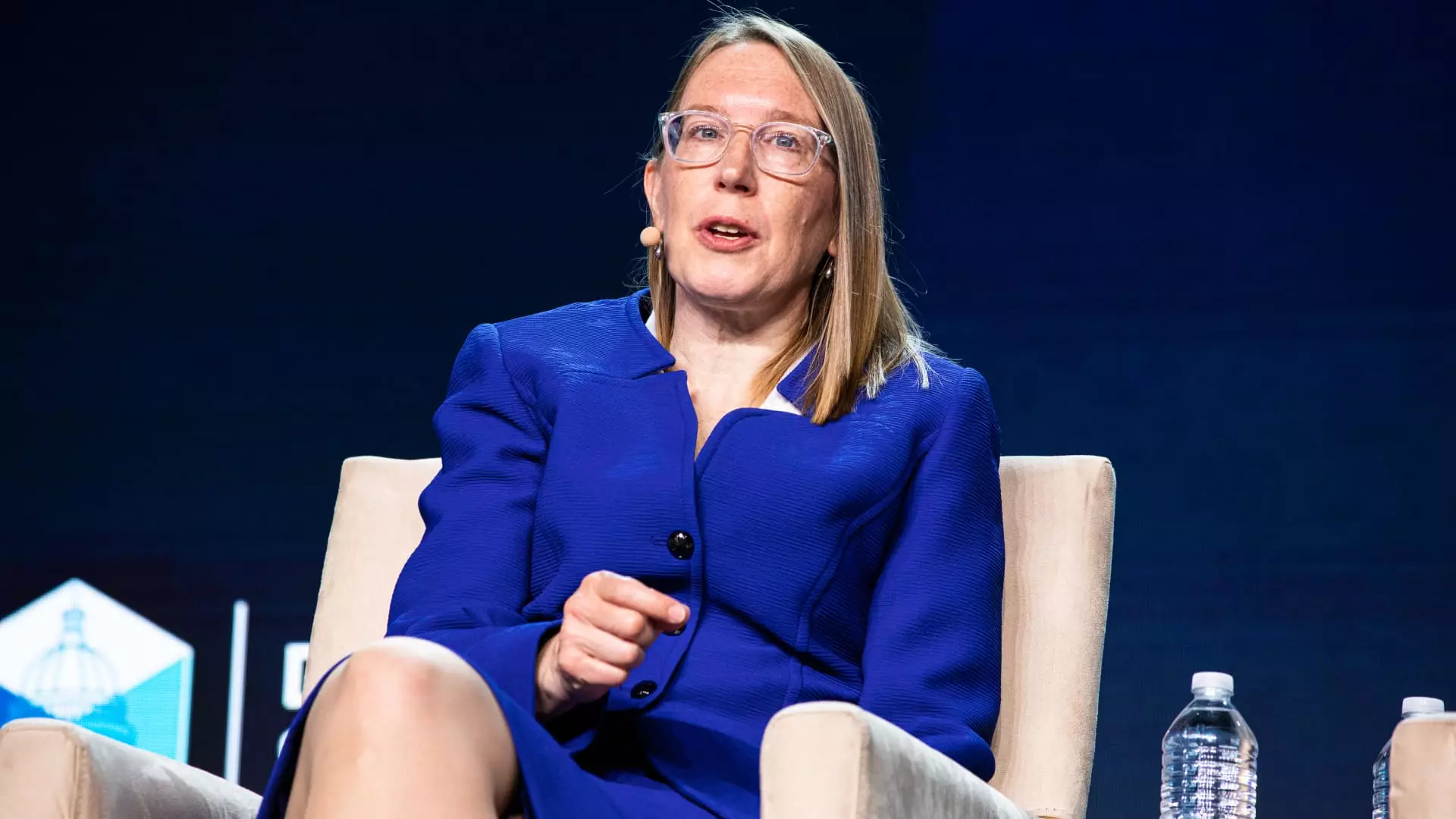As the digital currency landscape continues to evolve, the recent decision from the U.S. Securities and Exchange Commission (SEC) to step back from regulating meme coins stands as a pivotal moment in the world of cryptocurrency. This move has not only set a precedent for the future of digital currencies but has raised significant questions about consumer protection and investor responsibility. Veteran SEC Commissioner Hester Peirce’s remarks about the agency’s stance reveal a dynamic environment that will likely influence investor behavior and market trends for years to come.
Thanks to the SEC’s February declaration that most meme coins do not qualify as securities under U.S. federal law, these quirky tokens are now free from the regulatory scrutiny that typically accompanies traditional financial instruments. This change in policy allows individuals to invest in coin offerings without the expectation of regulatory oversight, a situation that some financial experts warn could be fraught with risks. The crypto world is being treated more like the wild west of finance, with the SEC choosing not to intervene amidst growing concerns about sustainability and market integrity.
The Role of $TRUMP in the Meme Coin Saga
In particular, the emergence of the $TRUMP meme coin has thrust the terminology of cryptocurrency directly into the political spotlight. Launched by former President Donald Trump, this coin gained extraordinary popularity, quickly reaching a staggering market cap of $15 billion. However, the real question lies in the value—or lack thereof—of such tokens. Much like a whimsical art piece, the $TRUMP coin lacks any significant underlying economic foundation, yet speculative trading has led to volatility that experts deem dangerous for uninformed investors.
Peirce’s insight regarding meme coins mirrors the past popularity of non-fungible tokens (NFTs) during 2021. Investors should recognize that while they can still engage with these tokens, there are no safety nets in place provided by federal regulations. It is an invitation to buy at your own risk, with the understanding that, unlike traditional investments, meme coins have proven to be highly susceptible to sentiment-driven fluctuations.
The billion-dollar questions prompted by the Trump-associated meme coin center around transparency and conflict of interest. Trump’s formidable influence in crypto raises eyebrows, especially considering that 80% of the $TRUMP token is controlled by Trump-related entities. If mere jest accounts for such substantial market movement, what happens when billionaires and celebrities increasingly associate themselves with the nascent industry? The potential for manipulation becomes a critical concern for prudent investors.
A Political Minefield?
The political backdrop complicates the narrative further. Critics, including Democratic Senator Richard Blumenthal, have cautioned against potential conflicts of interest regarding the Trump family’s cryptocurrency assets, voicing that these holdings could serve as conduits for external pressures on U.S. governance. As the SEC adopts a more industry-friendly regulatory approach under the current administration, the intersection of politics and finance is becoming more controversial than ever.
Moreover, laws that govern the behavior of industry giants like Binance are shifting, culminating in the SEC recently dropping its prosecution against the exchange and its founder, Changpeng Zhao. Their controversial history includes accusations of misleading investors and alarming discrepancies in fund management. While Zhao emerged relatively unscathed from his legal battles, the loopholes in regulation and the lack of accountability signal to the public that the cryptocurrency realm remains a gamble at best.
The Future of Regulatory Practices
Peirce’s comments suggest that the SEC’s philosophical shift could pave the way for a more flexible regulatory framework that provides clarity and guidance for investors while permitting innovation. The intention appears to be to refine existing laws rather than impose blanket prohibitions on the industry. Yet, a motion towards a less structured environment poses inherent risks.
Without established regulations, market participants are encouraged to become vigilant and informed. The onus of due diligence has now squarely shifted to the investors who are willing to navigate these tumultuous waters. This environment calls for continuous growth—both educationally and operationally—among investors as they grapple with their choices. It is essential to understand that the absence of protection is not an absence of risk.
As unique digital tokens proliferate and the lines between financial instruments blur, the role of regulators becomes increasingly critical. Will the SEC ultimately manage to catch up with the fast-paced changes of digital currencies, or will it forever remain a step behind, leaving investors unprotected in an industry rife with speculative extravagance? Only time will reveal the true impact of these transformative shifts on the burgeoning landscape of cryptocurrency investing.


Leave a Reply